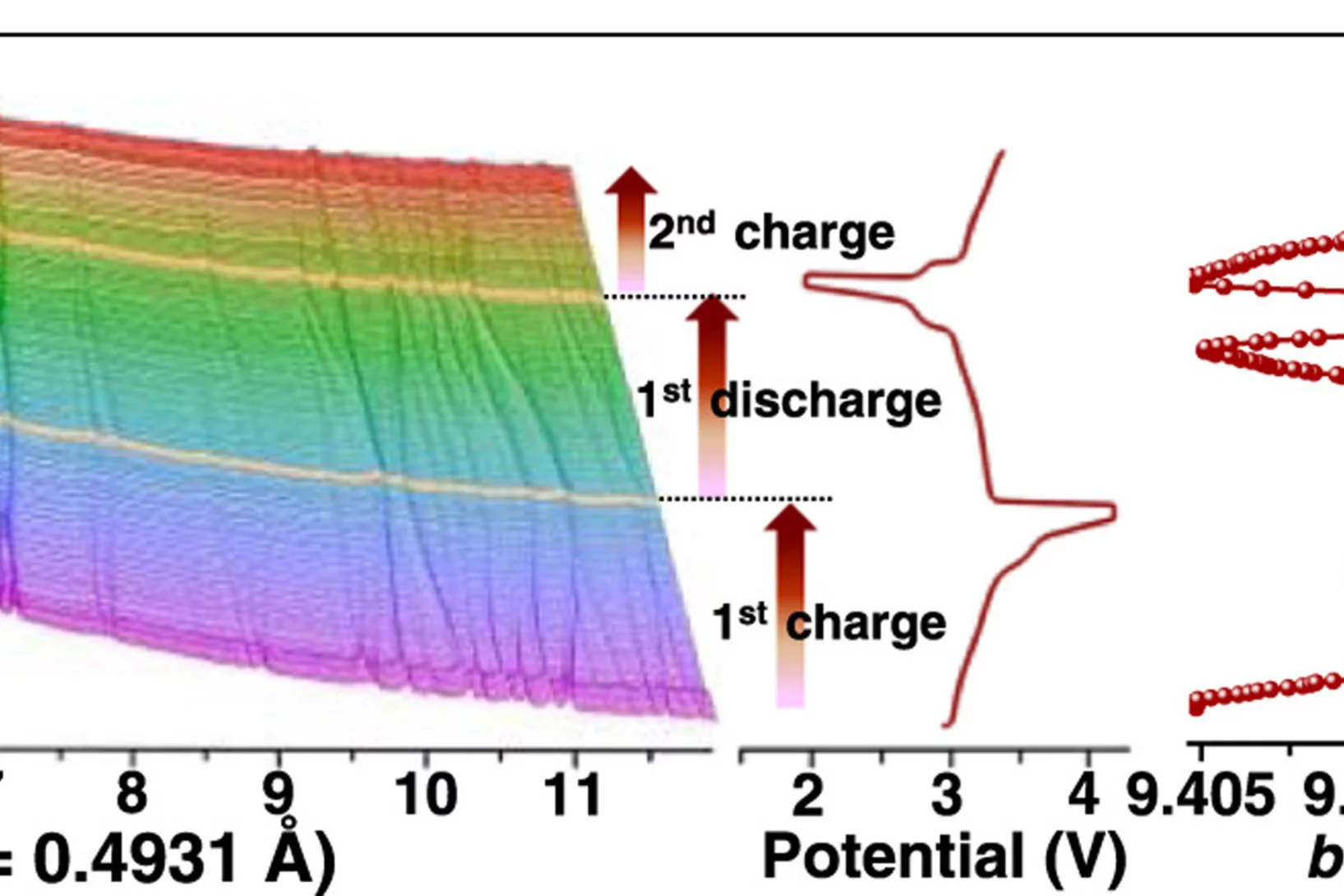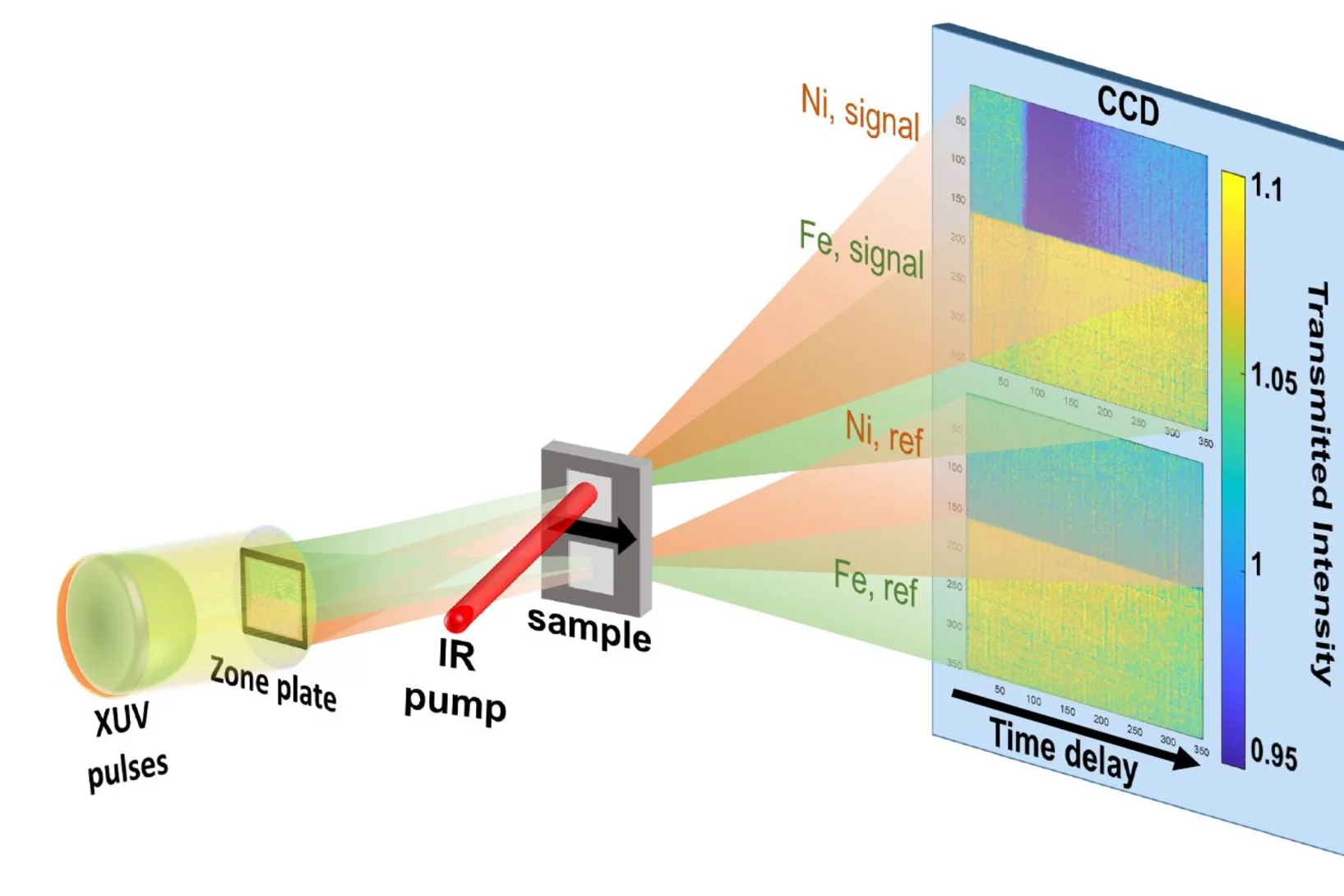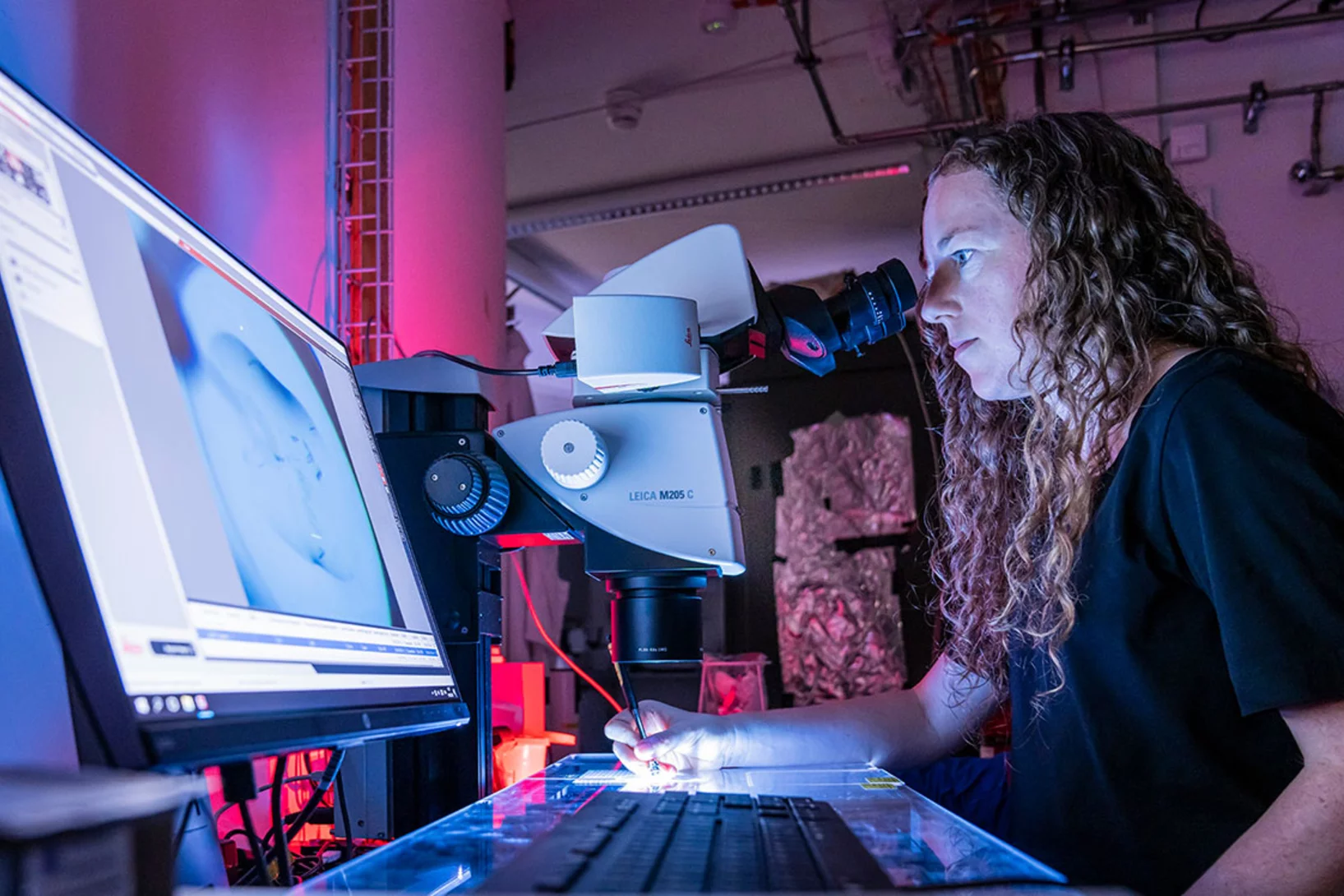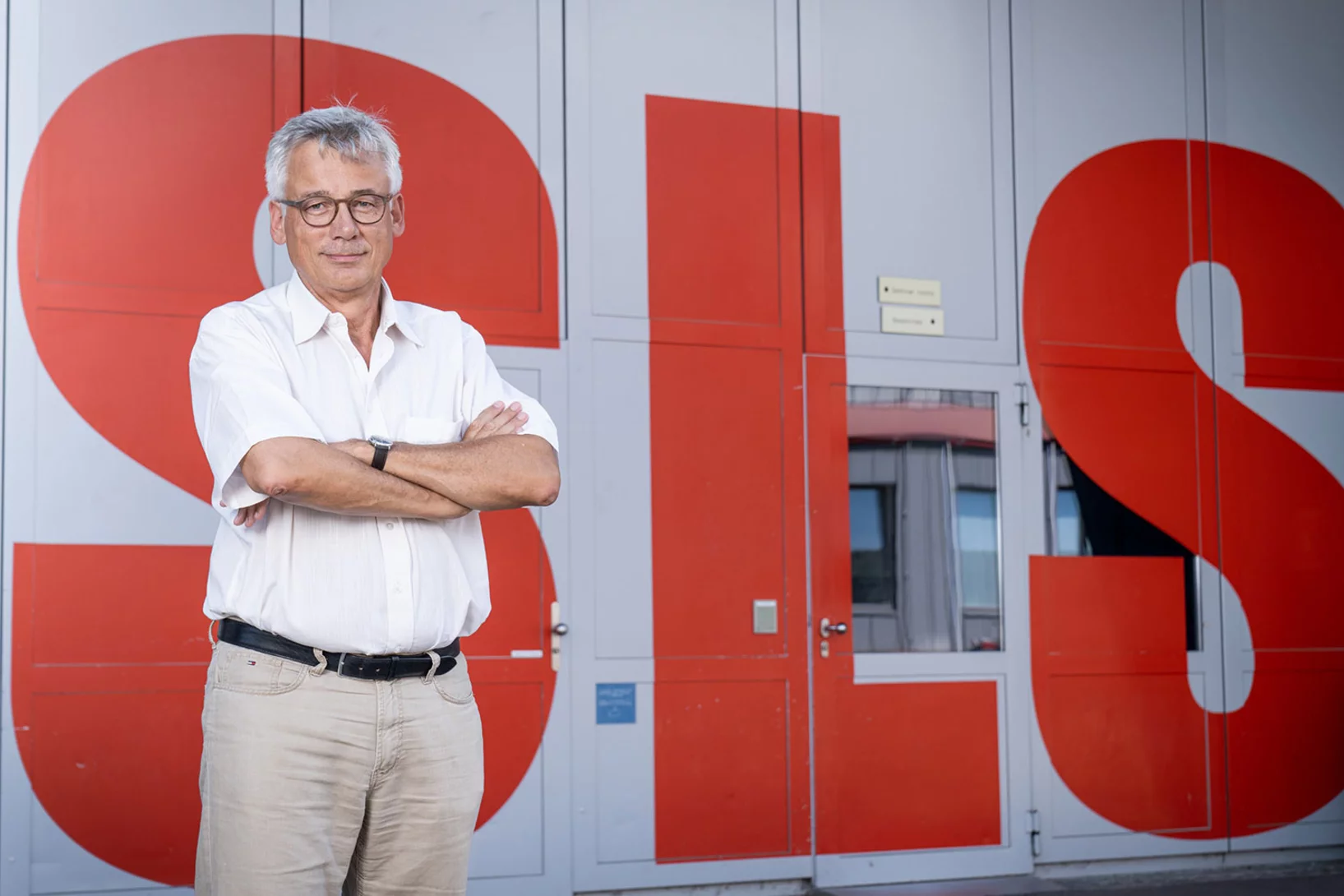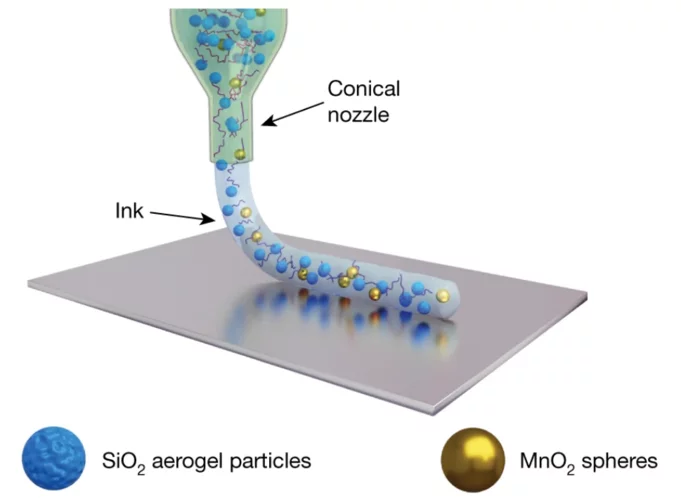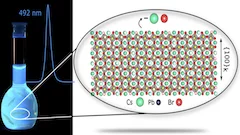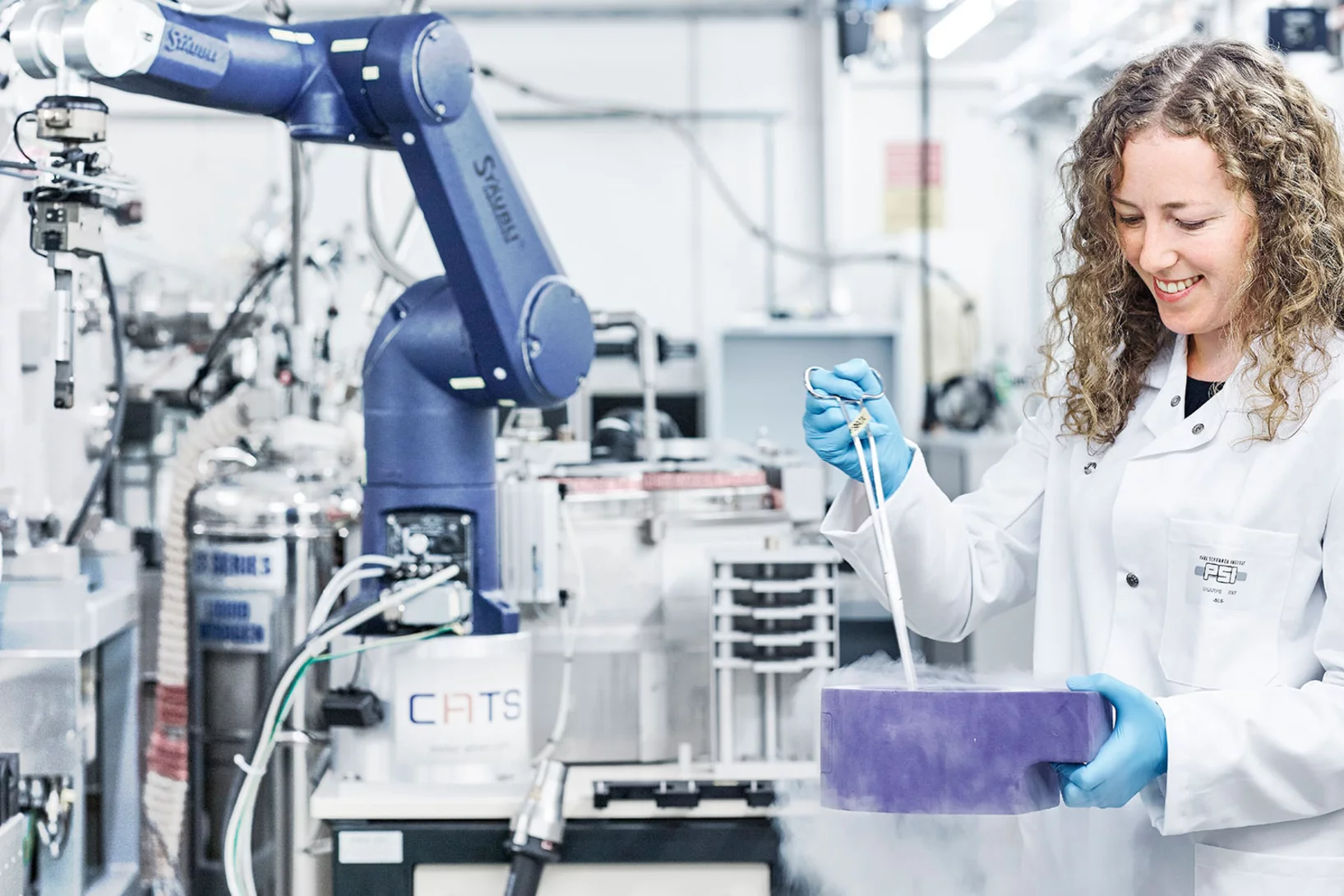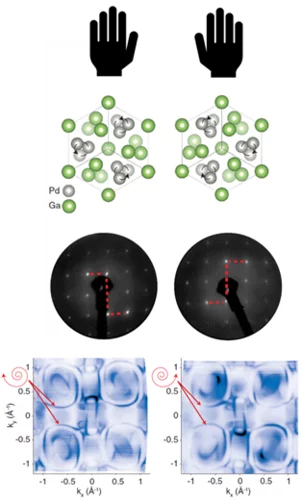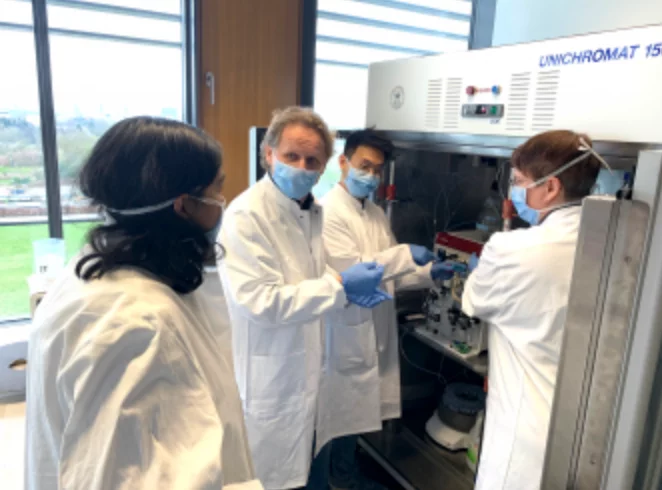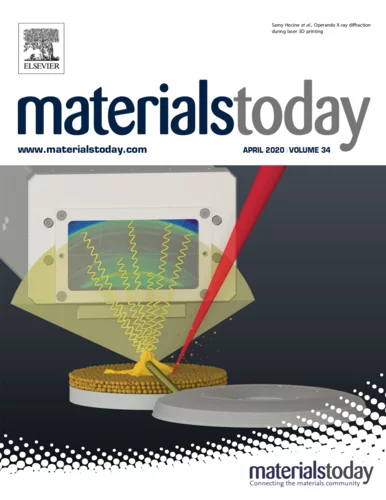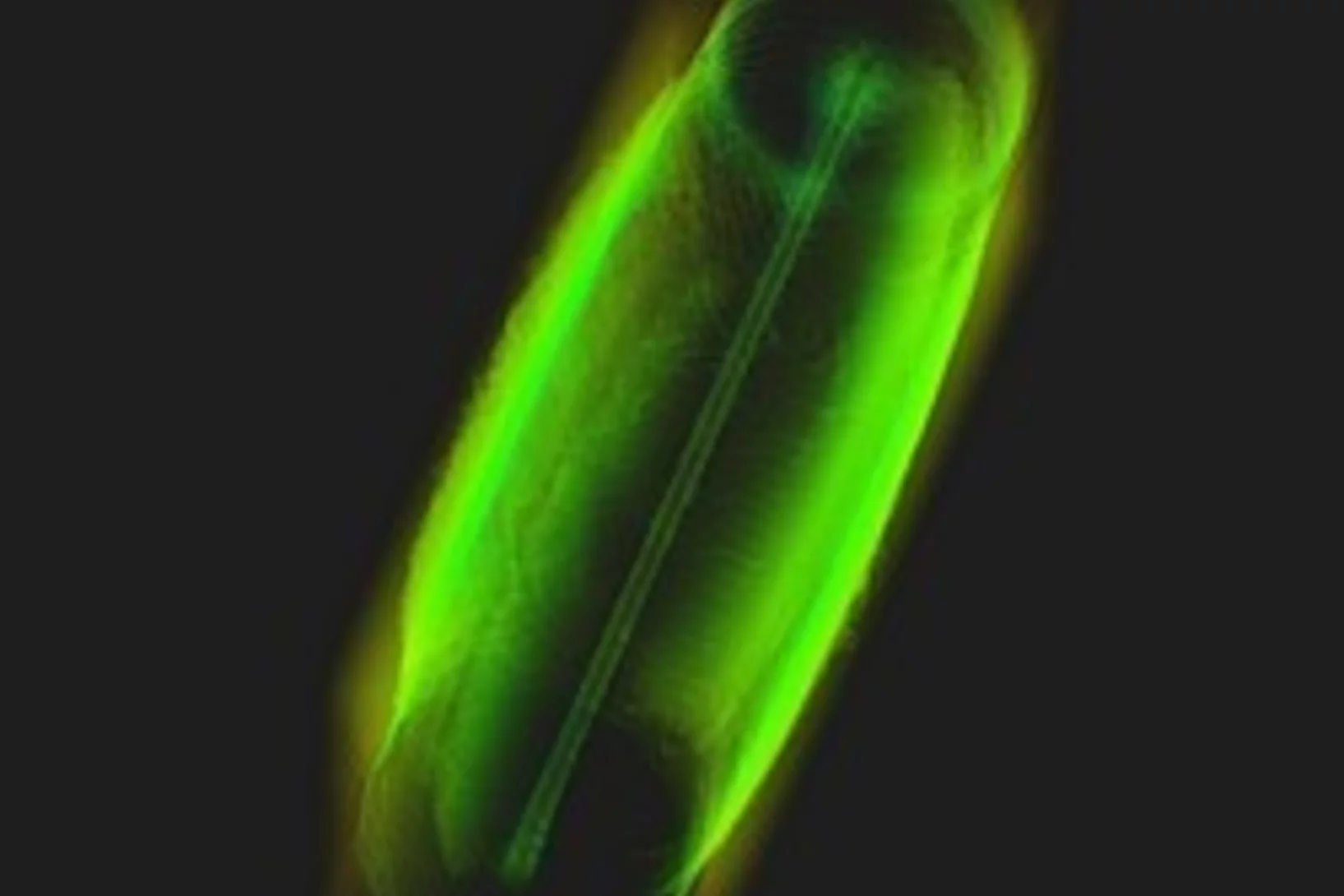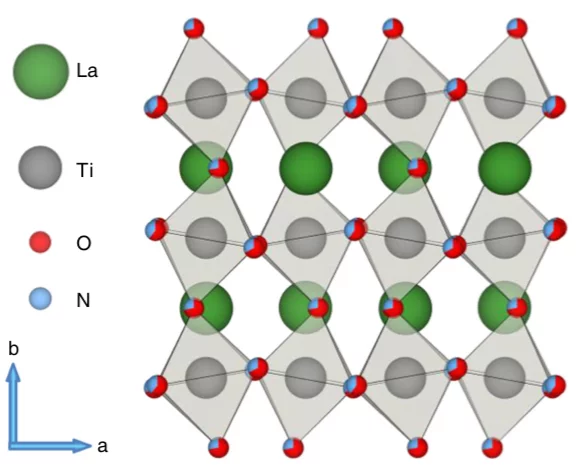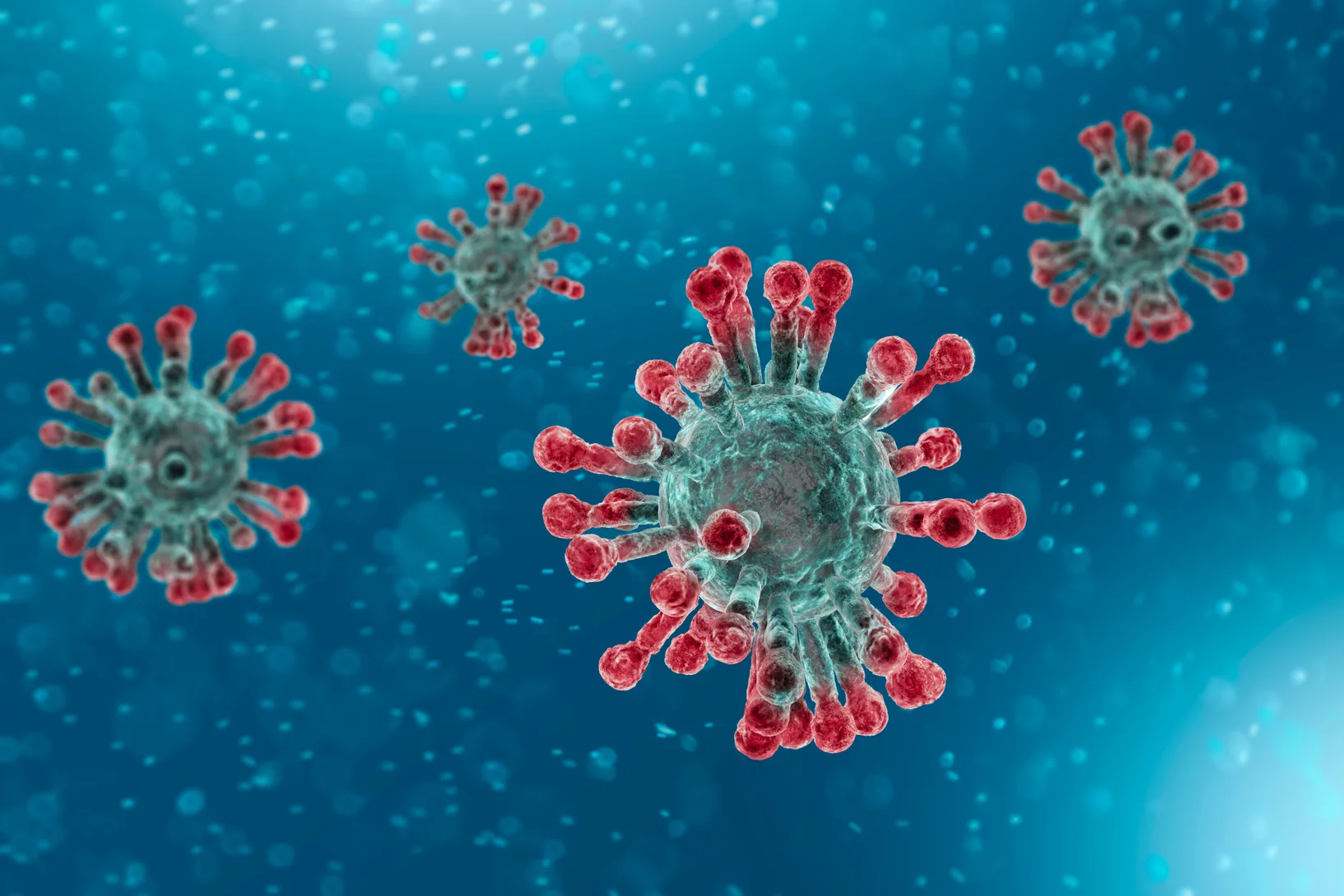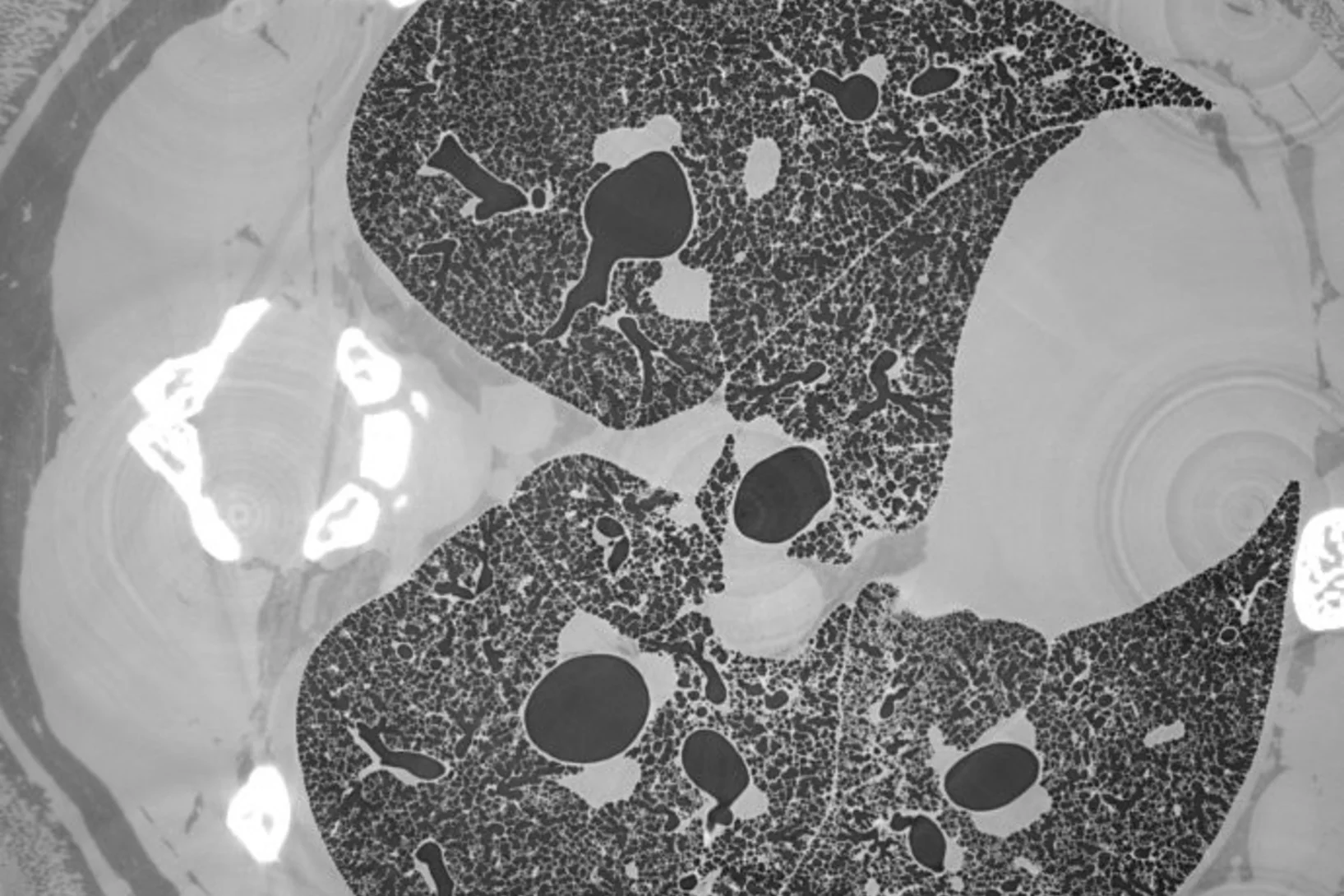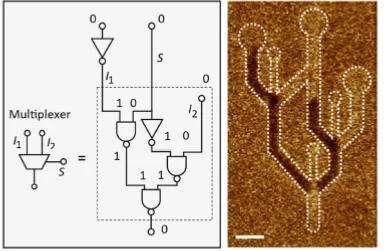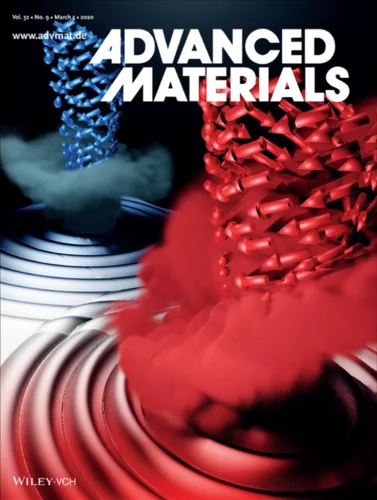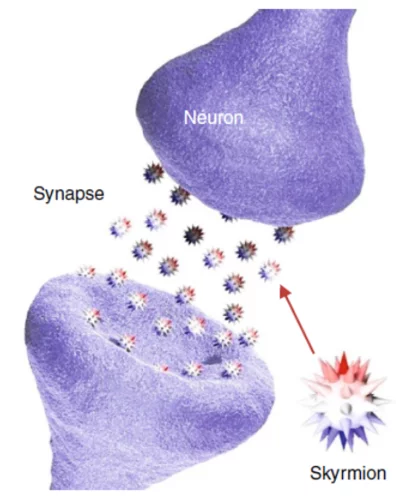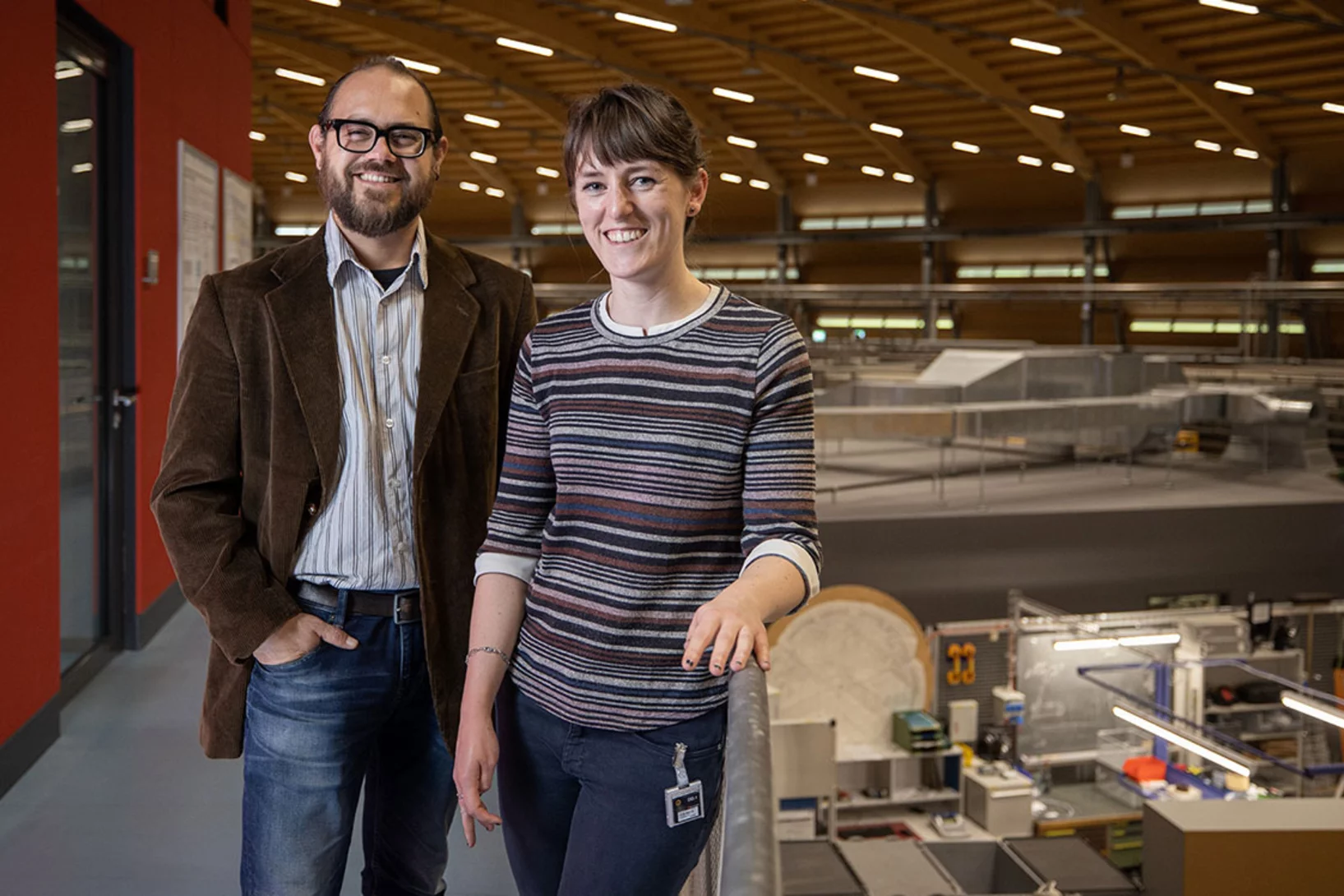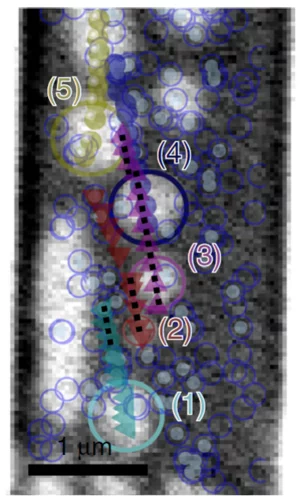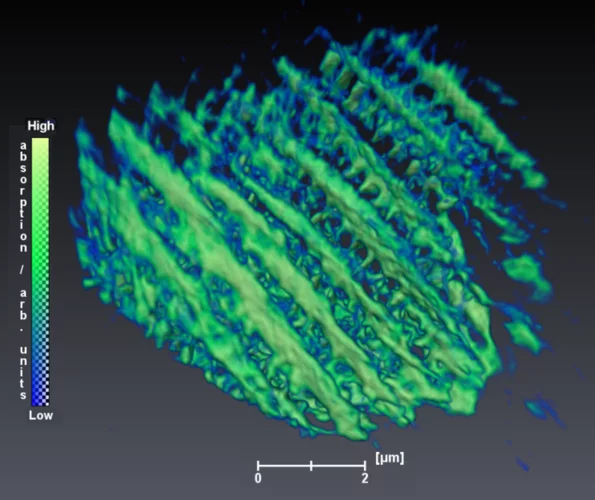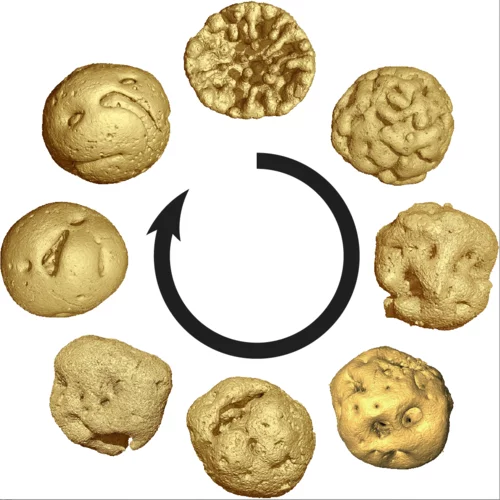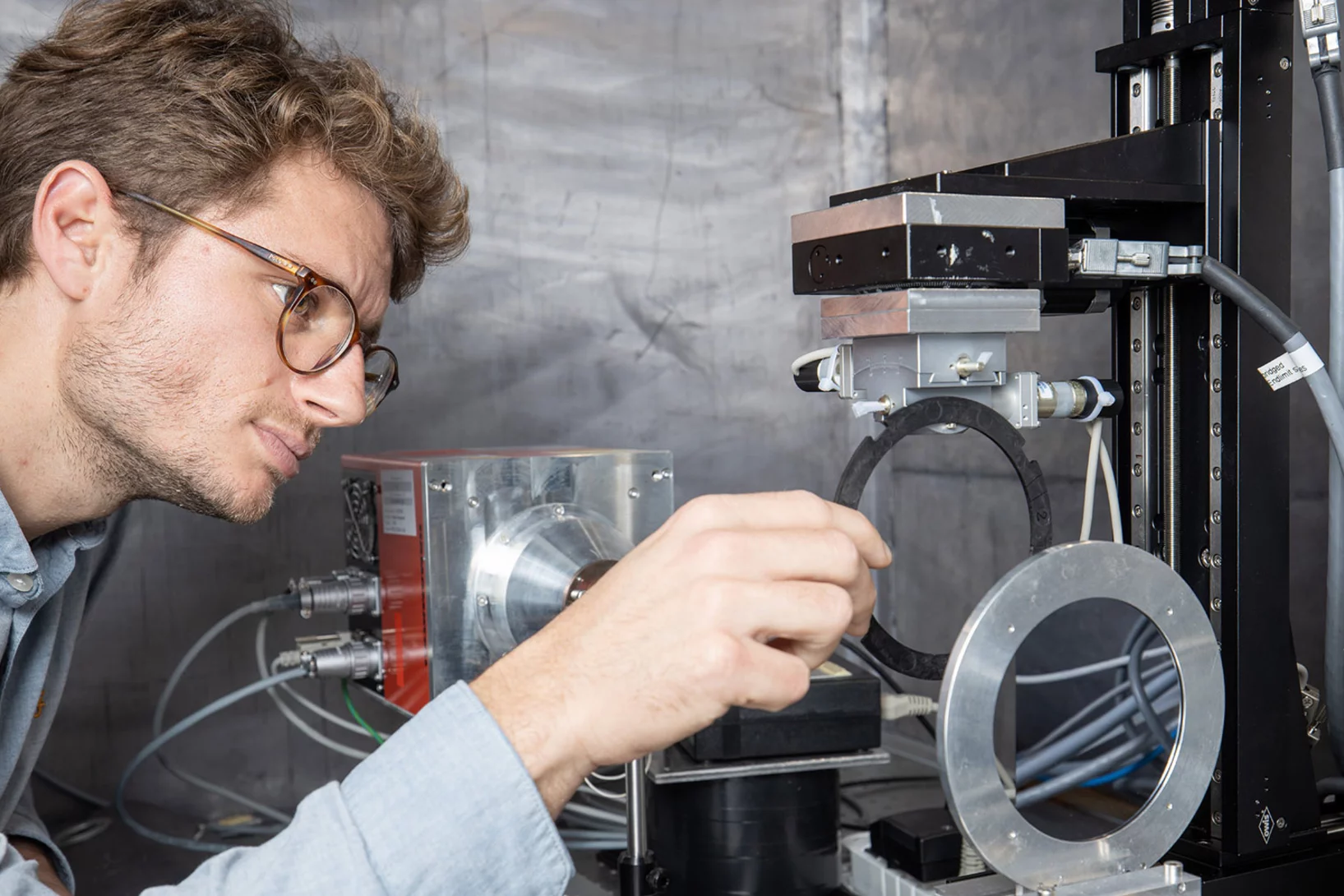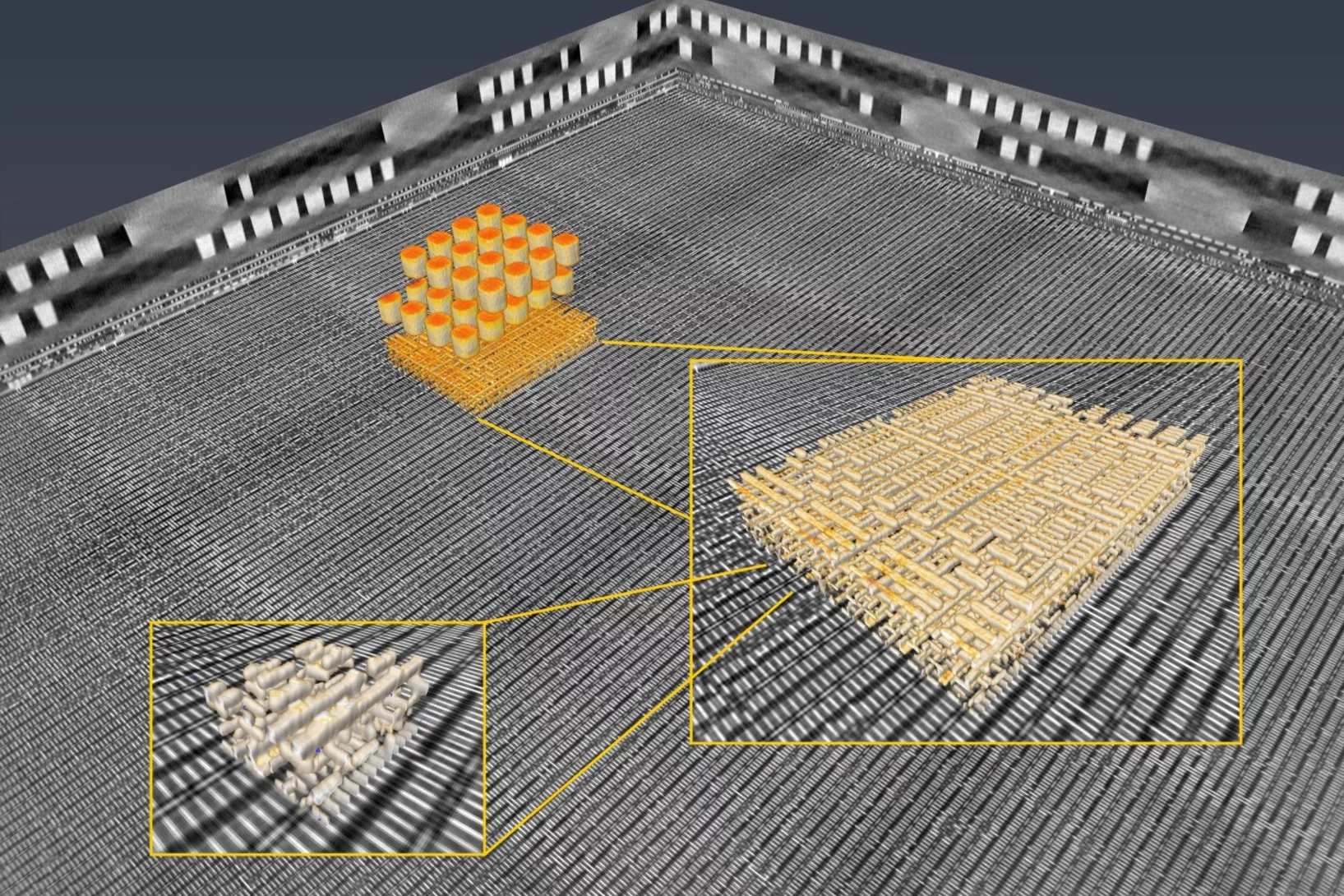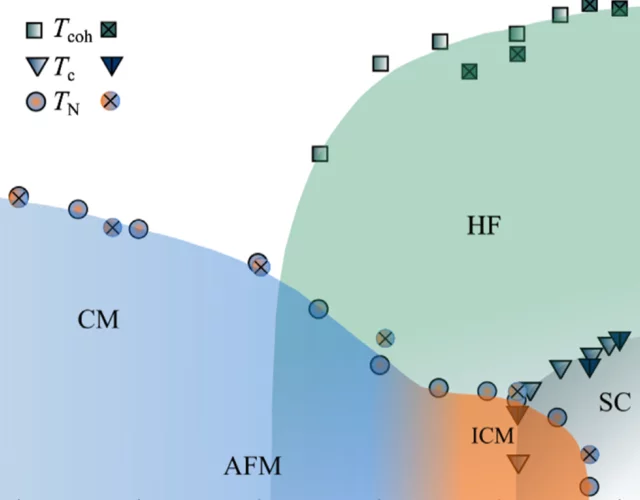Enhanced Stability of a Pyrophosphate cathode for Na-ion batteries
The structural changes of Na3.32Fe2.11Ca0.23(P2O7)2 during several charge discharge cycles is viewed by its powder pattern and selected cell parameter evolution.
Dr. Manuel Guizar-Sicairos elected as Fellow member of The Optical Society (OSA)
Dr. Manuel Guizar-Sicairos, beamline scientist at the cSAXS beamline, was elected as a Fellow Member of The Optical Society (OSA) for seminal contributions to methods and applications of coherent lensless imaging, ptychography, x-ray nanotomography, and new modalities of x-ray microscopy.
Two-color snapshots of ultrafast charge and spin dynamics
In a joint research effort, an international team of scientists lead by Emmanuelle Jal (Sorbonne Université) performed a time-resolved experiment at the FERMI free-electron laser to disclose the dynamic behavior of two magnetic element of a compount material in only one snapshot. The X-ray Optics and Applications group developed a dedicated optical element for this experiment that is usable with two different photon energies (colors) simultaneously.
Ein elektronisches Material massschneidern
Forschende am PSI haben ein Material untersucht, das sich für zukünftige Anwendungen in der Datenspeicherung eignen könnte. Mit einem Trick haben sie die Kristallstruktur ihrer Probe gezielt verzerrt und dabei vermessen, wie dies die magnetischen und elektronischen Eigenschaften beeinflusst.
Eine Frage der Bindung
Am PSI screenen Forschende Molekülfragmente darauf, ob diese an wichtige Proteine des Coronavirus SARS-CoV-2 binden und dieses so möglicherweise lahmlegen können. Aus den vielen Einzelinformationen erhoffen sie sich eine Antwort darauf, wie ein wirkungsvolles Medikament aussehen kann.
«Wir machen die SLS zukunftsfähig»
Die Synchrotron Lichtquelle Schweiz SLS soll ein Upgrade erhalten, um auch in den kommenden Jahrzehnten exzellente Forschung möglich zu machen. Hans Braun, Projektleiter SLS 2.0, spricht im Interview über das Vorhaben.
3D printing silica aerogels at the micrometer scale
A group of EMPA and ETH Zürich researchers have developed a new method to directly write ink made of silica aerogels in 3D. Thanks to X-ray phase contrast tomography at the TOMCAT beamline they characterized the resulting printed material with different compositions. Their results were published in Nature on August 18, 2020.
X-rays illuminate the particle atomic structure of cyan light emitting 6-monolayers CsPbBr3 nanoplatelets by Total Scattering
A cyan light (492 nm) emitting colloidal suspension of CsPbBr3 nanoplatelets in a flask, together with the high-quality XRPD Total Scattering pattern of the suspension measured at the X04SA-MS beamline and the full-nanoparticle structure thereby inferred.
Phase contrast microtomography reveals nanoparticle accumulation in zebrafish
Metal-based nanoparticles are a promising tool in medicine – as a contrast agent, transporter of active substances, or to thermally kill tumor cells. Up to now, it has been hardly possible to study their distribution inside an organism. Researchers at the University of Basel in collaboration with the TOMCAT team have used phase contrast X-ray tomographic microscopy to take high-resolution captures of the nanoparticle aggregation inside zebrafish embryos.
The study was published in the journal Small and featured on the cover of its current issue.
Covid-19-Forschung: Antivirale Strategie mit Doppelwirkung
Frankfurter Wissenschaftler identifizieren eine mögliche Schwachstelle des SARS-CoV-2-Virus. Einen Teil ihrer Messungen führten sie an der Synchrotron Lichtquelle Schweiz SLS am PSI durch. Die Forschungsergebnisse erscheinen diese Woche im Fachblatt Nature.
Cherned up to the maximum
In topological materials, electrons can display behaviour that is fundamentally different from that in ‘conventional’ matter, and the magnitude of many such ‘exotic’ phenomena is directly proportional to an entity known as the Chern number. New experiments establish for the first time that the theoretically predicted maximum Chern number can be reached — and controlled — in a real material.
Grosser Rat bewilligt 2,4 Millionen für Technologiezentrum Anaxam
Der Kanton Aargau unterstützt das Technologietransferzentrum Anaxam in Villigen für die Dauer von vier Jahren mit insgesamt 2,4 Millionen Franken. Der Grosse Rat hat am Dienstag in Spreitenbach den entsprechenden Kredit mit 124 zu 3 Stimmen bewilligt.
First MX results of the priority COVID-19 call
The Dikic group at the Goethe University in Frankfurt am Main, Germany has published the first results following the opening of the "PRIORITY COVID-19 Call” at SLS.
Operando X-ray diffraction during laser 3D printing
Ultra-fast operando X-ray diffraction experiments reveal the temporal evolution of low and high temperature phases and the formation of residual stresses during laser 3D printing of a Ti-6Al-4V alloy. The profound influence of the length of the laser-scanning vector on the evolving microstructure is revealed and elucidated.
Miniaturized fluidic circuitry observed in 3D
The team of Prof. Thomas Hermans at the University of Strasbourg in France managed to create wall-less aqueous liquid channels called anti-tubes. Thanks to X-ray phase contrast tomography at the TOMCAT beamline those anti-tubes could be observed in 3D. The exciting results were published in Nature on May 6, 2020.
Examining the surface evolution of LaTiOxNy an oxynitride solar water splitting photocatalyst
LaTiOxNy oxynitride thin films are employed to study the surface modifications at the solid- liquid interface that occur during photoelectrocatalytic water splitting. Neutron reflectometry and grazing incidence x-ray absorption spectroscopy were utilised to distinguish between the surface and bulk signals, with a surface sensitivity of 3 nm.
SLS MX beamtime update
Update of the SLS MX beamline operation during the COVID-19 period
X-ray Imaging for Biomedicine: Imaging Large Volumes of Fresh Tissue at High Resolution
The TOMCAT beamline at the Swiss Light Source specializes in rapid high-resolution 3-dimensional tomographic microscopy measurements with a strong focus on biomedical imaging. The team has recently developed a technique to acquire micrometer-scale resolution datasets on the entire lung structure of a juvenile rat in its fresh natural state within the animal’s body and without the need for any fixation, staining or other alteration that would affect the observed structure (E. Borisova et al., 2020, Histochem Cell Biol).
Logic operations with domain walls
A collaboration of scientists from the ETH Zürich and the Paul Scherrer Institute successfully demonstrated the all-electric operation of a magnetic domain-wall based NAND logic gate, paving the way towards the development of logic applications beyond the conventional metal-oxide semiconductor technology. The work has been published in the journal Nature.
Optics for spins
In this work, published on the front cover page of Advanced Materials, an international collaboration of Italian, American, and Swiss scientists demonstrated a novel concept for the generation and manipulation of spin waves, paving the way towards the development of magnonic nano-processors.
Can skyrmions read?
Can a skyrmion-based device be used to read a handwritten text? In this work, an international scientist collaboration led by the Korea Institute of Technology and the IBM Watson research center could provide a first answer to this question by fabricating a proof-of-principle single-neuron artificial neural network, using X-ray magnetic microscopy at the Swiss Light Source to investigate its performances.
Kurzfilm eines magnetischen Nanowirbels
Mit einer neu entwickelten Untersuchungsmethode konnten Forschende die magnetische Struktur im Inneren eines Materials mit Nanometer-Auflösung abbilden. Ihnen gelang ein kurzer «Film» aus sieben Bildern, der erstmalig in 3-D zeigt, wie sich winzige Wirbel der Magnetisierung tief im Inneren eines Materials verändern.
Many skyrmions, one angle
Employing a tailored multilayered magnetic film, optimized for the zero-field stabilization of magnetic skyrmions, researchers have investigated the influence of the skyrmion diameter on its current-induced sideways motion, uncovering mechanisms that allow for this topological property to be controlled.
MacEtch in gas phase: a new nanofabrication technology at PSI
The grating fabrication team of the X-ray tomography group has scored another record in etching technology of silicon by realizing a MacEtch process in gas phase. Ultra-high aspect ratios (up to 10 000 : 1) in the nanoscale regime (down to 10 nm) were achieved by platinum assisted chemical etching of silicon in the gas phase. The results were published in Nanoscale Horizons on February 17, 2020.
Soft X-ray Laminography: 3D imaging with powerful contrast mechanisms
3D imaging using synchrotron radiation is a widely used tool that allows access to the inner structure of complex objects. An international and interdisciplinary consortium of scientists from the Swiss Light Source (PolLux and cSAXs), the Friedrich-Alexander-Universität Erlangen-Nürnberg, and the University of Cambridge developed the new 3D imaging technique of Soft X-ray Laminography (SoXL). SoXL allows for the investigation of thin and extended samples while taking advantage of the characteristic absorption contrast mechanisms in the soft X-ray range, providing 3D information with nm spatial resolution.
Animal embryos evolved before animals
Detailed characterization of cellular structure and development of exceptionally preserved ancient tiny fossils from South China by synchrotron based X-ray tomographic microscopy at TOMCAT led an international team of researchers from the University of Bristol and Nanjing Institute of Geology and Palaeontology to the discovery that animal-like embryos evolved long before the first animals appear in the fossil record.
Faserverstärkte Verbundstoffe schnell und präzise durchleuchten
Forschende des Paul Scherrer Instituts PSI haben eine neues Verfahren entwickelt, mit dem sich faserverstärkte Verbundwerkstoffe präzise durchleuchten lassen. Das könnte helfen, bessere Materialien mit neuartigen Eigenschaften zu entwickeln.
3D imaging for planar samples with zooming
Researchers of the Paul Scherrer Institut have previously generated 3-D images of a commercially available computer chip. This was achieved using a high-resolution tomography method. Now they extended their imaging approach to a so-called laminography geometry to remove the requirement of preparing isolated samples, also enabling imaging at various magnification. For ptychographic X-ray laminography (PyXL) a new instrument was developed and built, and new data reconstruction algorithms were implemented to align the projections and reconstruct a 3D dataset. The new capabilities were demonstrated by imaging a 16 nm FinFET integrated circuit at 18.9 nm 3D resolution at the Swiss Light Source. The results are reported in the latest edition of the journal Nature Electronics. The imaging technique is not limited to integrated circuits, but can be used for high-resolution 3D imaging of flat extended samples. Thus the researchers start now to exploit other areas of science ranging from biology to magnetism.
Evolution of Magnetic Order from the Localized to the Itinerant Limit
Quantum materials that feature magnetic long-range order often reveal complex phase diagrams when localized electrons become mobile. In many materials magnetism is rapidly suppressed as electronic charges dissolve into the conduction band. In materials where magnetism persists, it is unclear how the magnetic properties are affected.
Metastasierung von Tumoren verhindern
Forschende des Paul Scherrer Instituts PSI sind gemeinsam mit Kollegen des Pharmaunternehmens F. Hoffmann-La Roche AG der Entwicklung eines Wirkstoffes gegen die Metastasierung von bestimmten Krebsarten einen wichtigen Schritt nähergekommen. Mithilfe der Synchrotron Lichtquelle Schweiz SLS entschlüsselten sie die Struktur eines Rezeptors, der entscheidend an der Wanderung von Krebszellen beteiligt ist.
